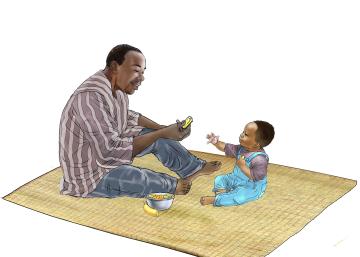Ghana RCEL (USAID Advancing Nutrition | 2023)

Key Messages
Included Images

|
Early Communication - Brother reading a book with a child - 01 - RCEL by USAID Advancing Nutrition |

|
Early Communication - Mother and child pointing to their mouths during feeding time - 03 - RCEL by USAID Advancing Nutrition |

|
Early Communication - Mother picking up baby while baby reaches for her - 06 - RCELGH by USAID Advancing Nutrition |

|
Responsive Feeding - Baby refusing complementary food from father - 04c - RCELGH by USAID Advancing Nutrition |





